Some plants are survivors. Others are show-offs. These are both. We’re talking about perennials that laugh in the face of drought, bounce back from frost, and bloom like nothing ever happened. They don’t just hang on—they thrive. They grow stronger. Bigger. Better. Year after year. If you’re tired of plants that vanish after one dramatic summer, this is your crew. Tough, gorgeous, and full of surprises—these perennials don’t need babysitting. They just need a place in your yard.
Coneflower (Echinacea)
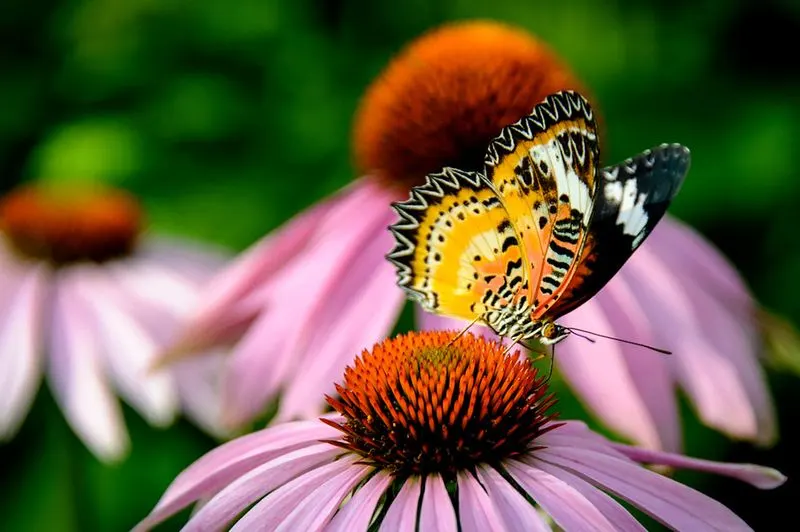
Coneflowers, with their spiky centers and daisy-like petals, are a favorite among gardeners. Their resilience to drought and ability to thrive in poor soil makes them a staple in many gardens. Bees and butterflies are frequent visitors, drawn by the nectar-rich blooms.
These perennials are not only beautiful but also useful in herbal remedies. Many believe coneflowers boost the immune system, adding to their charm. Whether in a cottage garden or a formal landscape, their striking appearance is hard to ignore, making them a popular choice for those seeking both beauty and hardiness.
Sedum (Stonecrop)

Sedums, often called stonecrops, are the robust warriors of the plant world. Known for their thick, water-storing leaves, they thrive in sunny, dry conditions, making them perfect for rock gardens or containers.
Their star-shaped flowers add a splash of color against the green or reddish foliage, attracting pollinators like bees. As autumn approaches, their blooms turn into beautiful shades of rusty red, extending the visual appeal into the cooler months. Their easy-care nature and adaptability make them a go-to for gardeners looking for fuss-free plants.
Hosta

Hostas are a gardener’s dream for shaded areas. With leaves in every shade of green imaginable and attractive variegated patterns, they add texture and depth to landscapes. These hardy perennials thrive in shade, making them ideal for woodland gardens.
Hostas are loved for their ability to multiply and spread, filling spaces with ease. Slugs may nibble on their leaves, but a bit of sand or crushed eggshells can deter these pests. Their beautiful foliage is complemented by spikes of lavender or white flowers, adding a touch of grace to any garden setting.
Daylily (Hemerocallis)
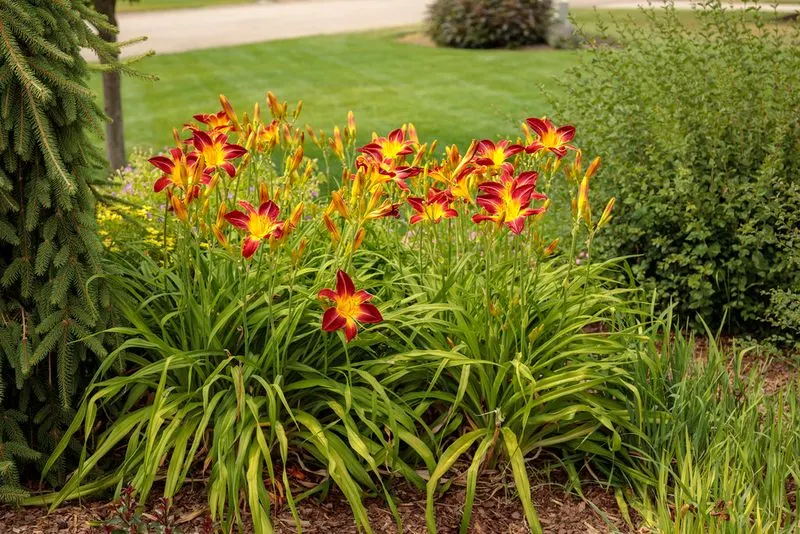
Daylilies grace gardens with their spectacular blooms that, although short-lived, are produced in abundance throughout the growing season. Their trumpet-shaped flowers come in an array of colors, creating a lively display.
These perennials are renowned for their toughness, thriving in various soil types and tolerating drought once established. They are perfect for borders and mass plantings, requiring minimal care. As the name suggests, each bloom lasts only a day, but with many buds per stem, they ensure a continuous show, making them a favorite among busy gardeners.
Black-eyed Susan (Rudbeckia)
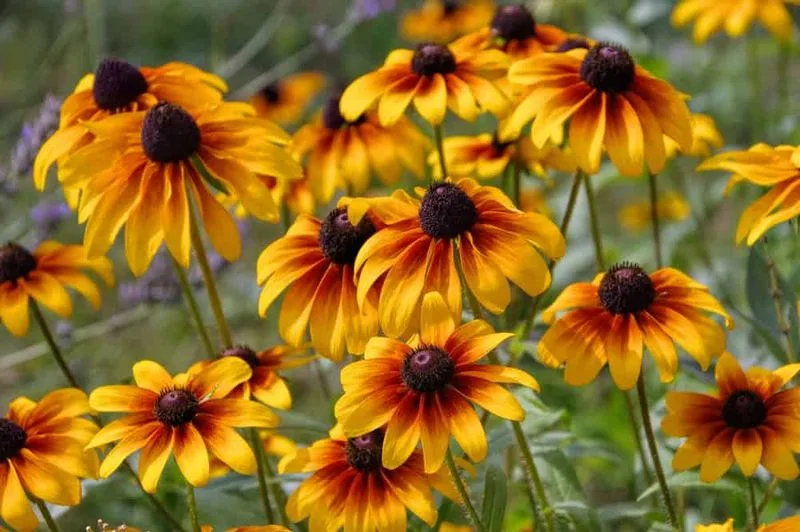
With cheerful yellow petals and dark centers, black-eyed Susans are synonymous with summer. These perennials are exceptionally resilient, thriving in full sun and well-drained soil. Their long-lasting blooms add a burst of color to any garden.
Known for attracting butterflies and bees, they play a crucial role in pollination. As cut flowers, they bring the warm hues of summer indoors. Black-eyed Susans self-seed, ensuring they return year after year, making them a beloved choice for gardeners who appreciate low-maintenance yet impactful plants.
Russian Sage (Perovskia atriplicifolia)
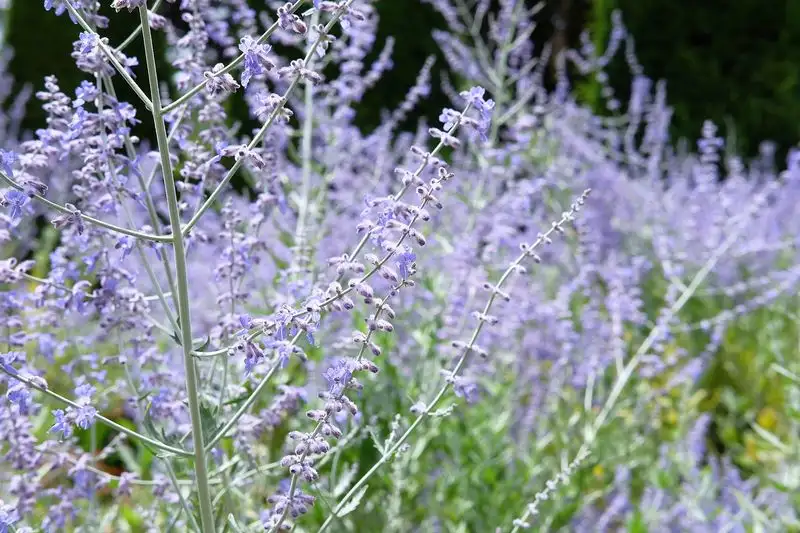
Russian Sage, with its silvery leaves and lavender-blue blooms, brings a touch of elegance to any garden. Its airy, upright habit adds height and movement, making it a striking feature in borders and xeriscapes.
Not only is it drought-tolerant, but it also thrives in poor soils, reducing the need for fertilization. Russian Sage is loved by pollinators, providing a nectar source throughout its long blooming period. Its aromatic foliage adds another layer of interest, making it a favorite for those seeking beauty and resilience in their garden spaces.
Lamb’s Ear (Stachys byzantina)
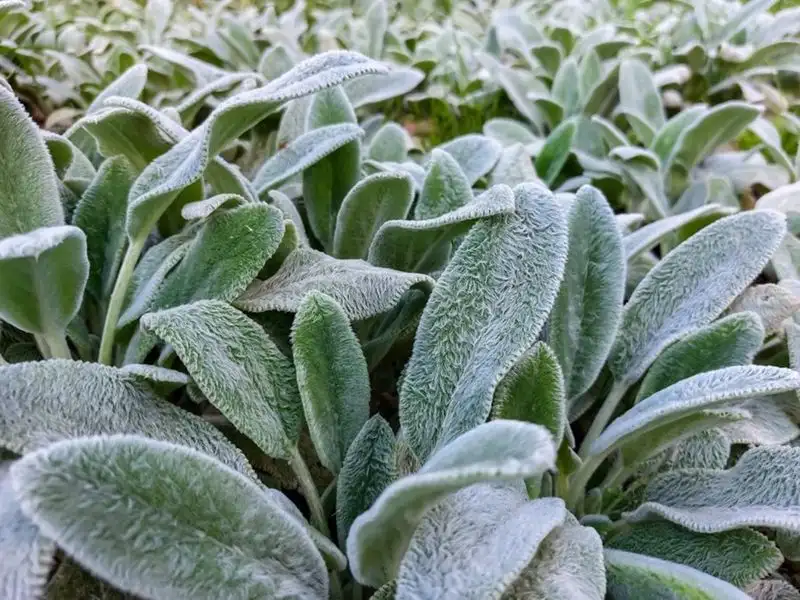
Lamb’s Ear, with its velvety, silver leaves, is as soft to the touch as its name suggests. This low-growing perennial forms a dense carpet, making it ideal for edging or as a ground cover in sunny gardens.
Its ability to withstand drought and poor soil conditions makes it a reliable choice for challenging sites. Tall spikes of purple flowers appear in summer, attracting bees and butterflies. Lamb’s Ear adds a tactile element to gardens, inviting touch and admiration, while its subtle color provides a calming contrast to more vibrant plants.
Yarrow (Achillea)

Yarrow, with its feathery foliage and clusters of tiny flowers, is a robust perennial that brings charm to any garden. Its tolerance for dry, poor soils makes it a perfect choice for wildflower gardens and meadows.
Yarrow attracts beneficial insects, helping to control pests naturally. Its flowers, which range from white to vibrant pinks and yellows, offer a long-lasting display. As a cut flower, yarrow adds texture and interest to arrangements. Its historical uses in herbal medicine lend an additional layer of intrigue, cementing its place in the garden.
Hellebore (Lenten Rose)
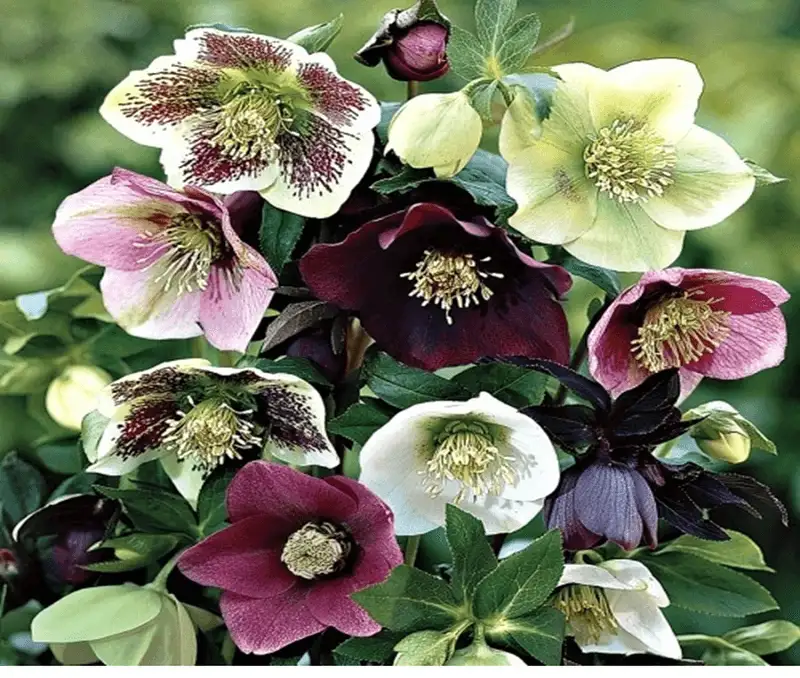
Hellebores, often called Lenten Roses, are among the first blooms to appear in late winter to early spring. Their nodding flowers come in muted shades of pink, purple, and white, adding a touch of elegance to shaded gardens.
Despite their delicate appearance, hellebores are tough, thriving in partial shade and well-drained soil. They are long-lived perennials, providing a consistent display year after year. Deer and rabbits tend to avoid them, making them a practical choice for gardens troubled by wildlife. Hellebores’ evergreen foliage offers year-round interest, enhancing their appeal.
Peony

Peonies captivate with their lush, fragrant blooms and are often considered the jewels of the garden. These perennials reward patience, as they take a few years to establish but are long-lived once they do.
Their large, showy flowers attract pollinators and make excellent cut flowers, bringing a touch of romance indoors. Peonies prefer well-drained soil and full sun, thriving in a variety of climates. As they mature, their bloom count increases, offering more spectacular displays each year. Their classic beauty and resilience ensure they remain a favorite among gardeners.
Lavender
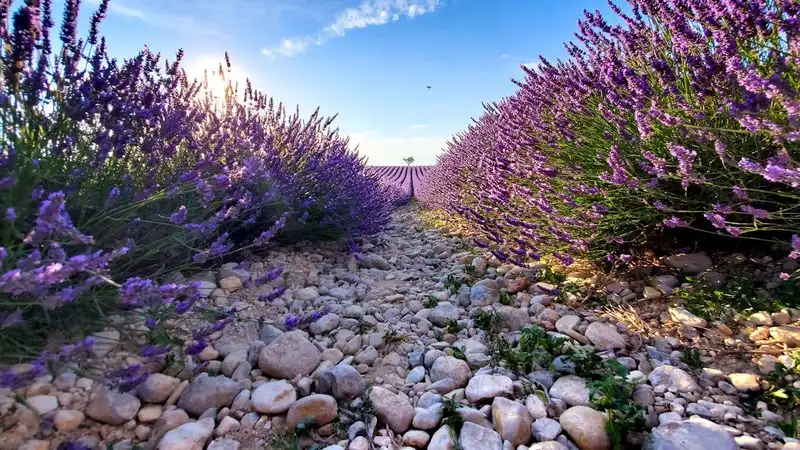
Lavender, known for its soothing scent and silvery foliage, is a must-have for any garden. Its spikes of purple flowers bloom in midsummer, attracting bees and butterflies. Lavender thrives in well-drained soil and full sun, making it ideal for rock gardens or borders.
This perennial’s fragrance is not only pleasing but also repels pests like mosquitoes. Its dried flowers are used in sachets and potpourri, bringing the garden’s aroma indoors. Lavender’s drought tolerance and culinary uses add to its appeal, making it a versatile and cherished addition to garden landscapes.
Catmint (Nepeta)

Catmint, with its aromatic foliage and spikes of lavender-blue flowers, is a carefree perennial that adds charm to any garden. Its long blooming season, from late spring to fall, ensures continuous color and interest.
Catmint is drought-tolerant and thrives in various soil types, making it ideal for borders and cottage gardens. Its flowers attract pollinators, while the foliage is often ignored by deer and rabbits. Catmint’s relaxed habit and pleasant scent create a calming ambiance, inviting visitors to linger and enjoy the garden’s beauty and tranquility.
Astilbe
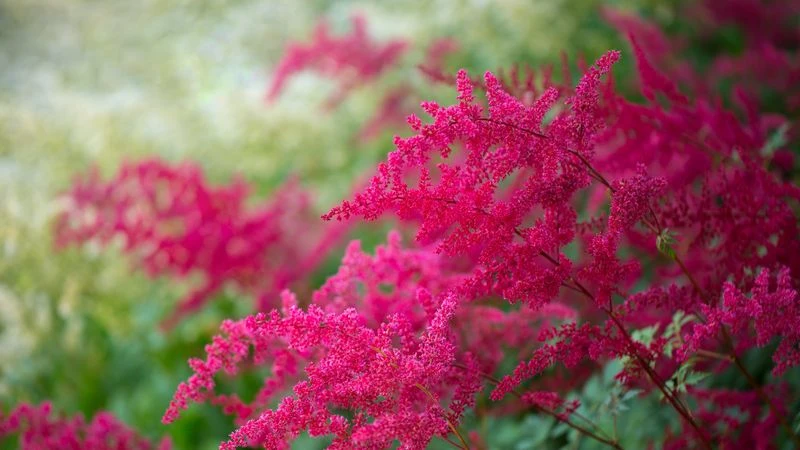
Astilbe, with its elegant plumes of feathery flowers, brings a touch of grace to shaded garden areas. Its blooms, ranging from soft pastel pinks to vibrant reds and whites, add texture and movement.
Astilbe thrives in moist, well-drained soil, making it perfect for woodland gardens or along water features. Its fern-like foliage provides interest even after the flowers fade. Astilbe is resistant to deer and rabbits, ensuring its beauty remains undisturbed. This perennial’s delicate appearance belies its hardiness, offering both elegance and reliability in garden design.
Bleeding Heart (Dicentra spectabilis)
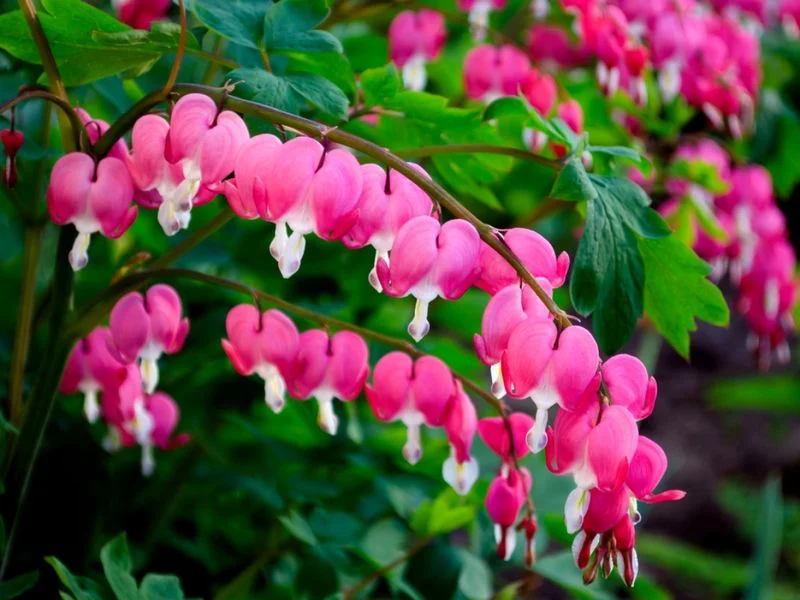
Bleeding Hearts captivate with their heart-shaped flowers that dangle like charms on a necklace. Blooming in spring, they bring a touch of whimsy and nostalgia to shaded gardens.
These perennials prefer moist, well-drained soil and can thrive in partial to full shade. Their delicate, arching stems and fern-like foliage add texture to the garden. Although they may go dormant in the summer heat, Bleeding Hearts reliably return each spring, enchanting gardeners with their unique blooms and romantic allure.
Their ephemeral beauty makes them a poetic choice for any shaded garden area.
Coral Bells (Heuchera)

Coral Bells, known for their stunning foliage, come in a rainbow of colors from deep purple to chartreuse. These perennials add vibrant splashes of color to gardens throughout the year.
Coral Bells thrive in partial shade and well-drained soil, making them ideal for rock gardens or borders. Their delicate, bell-shaped flowers attract hummingbirds, while the foliage provides year-round interest. Easy to care for and adaptable, Coral Bells are perfect for gardeners seeking to add color and texture without much fuss, ensuring a dynamic landscape.
Hollyhock (Alcea)
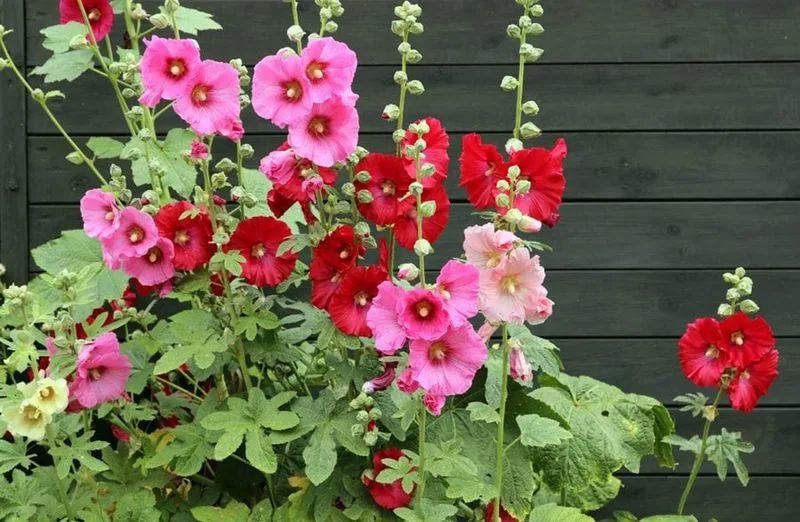
Hollyhocks, with their towering spikes of colorful blooms, are a classic choice for cottage gardens. They bring vertical interest and a sense of nostalgia to any landscape.
Despite their delicate appearance, hollyhocks are remarkably resilient, tolerating drought and thriving in sunny spots. Their flowers attract pollinators, creating a lively garden environment. Hollyhocks may reseed themselves, ensuring their presence in the garden for years to come. Their old-world charm and hardiness make them a beloved choice for gardeners looking to create a timeless floral display.
Foxglove (Digitalis)
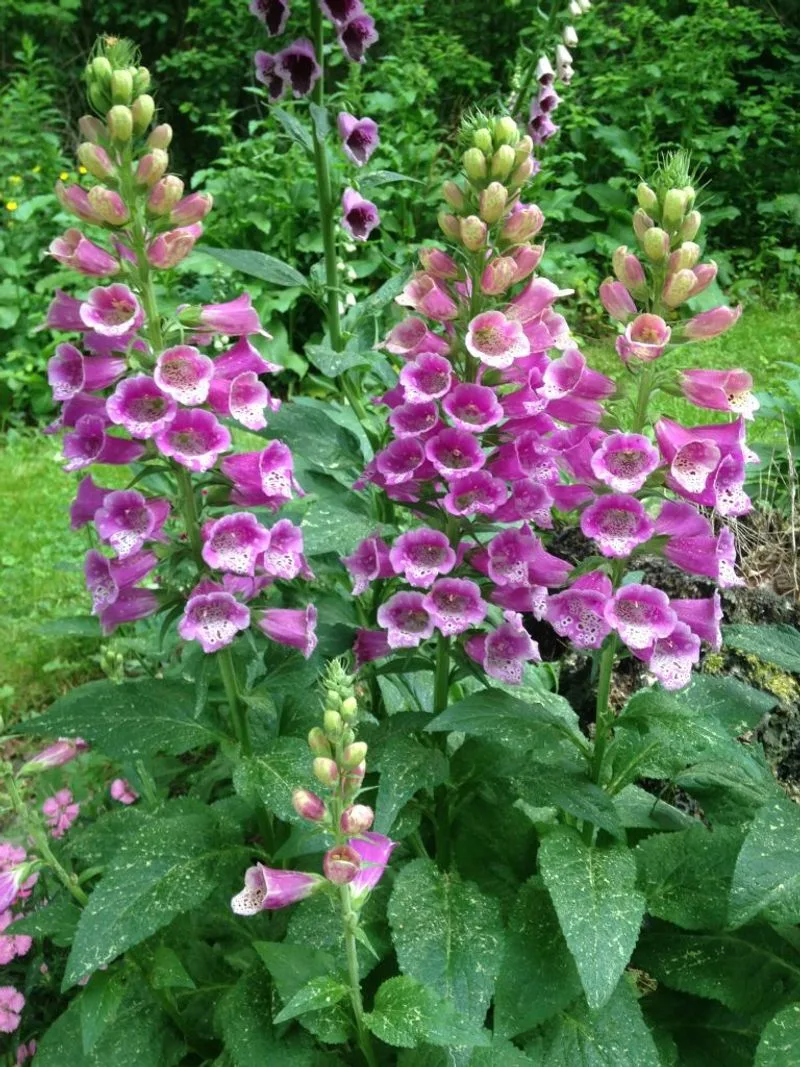
Foxgloves are known for their striking spires of tubular flowers that create a dramatic statement in gardens. These biennials thrive in partial shade and well-drained soil, adding height and elegance.
Their flowers attract hummingbirds and bees, contributing to a healthy ecosystem. Foxgloves self-seed, allowing them to reappear year after year, ensuring a consistent yet dynamic display. While all parts are toxic if ingested, their beauty and ecological benefits far outweigh the risks, making them a cherished addition to gardens that prioritize pollinator-friendly plants.
Japanese Anemone
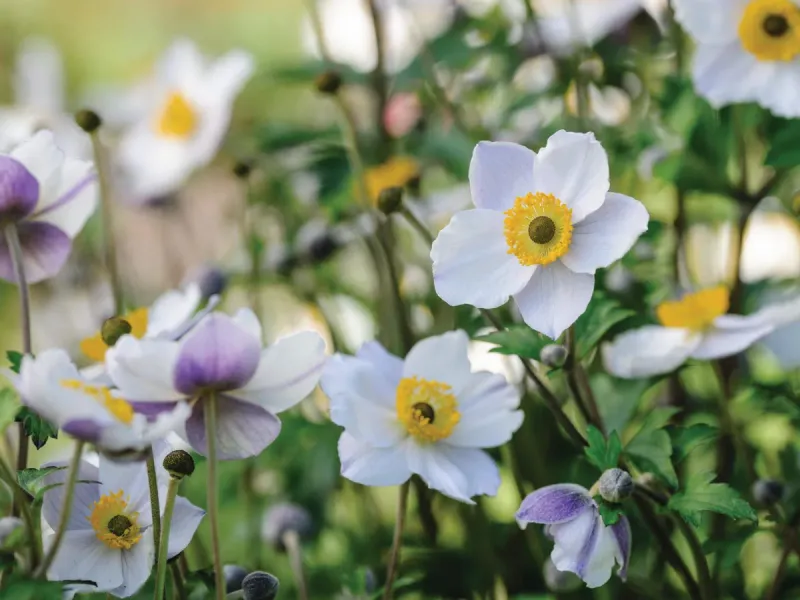
Japanese Anemones grace gardens with their delicate blooms in late summer to fall, extending the flowering season. Their elegant flowers come in shades of pink and white, dancing on tall, wiry stems.
These perennials thrive in partial shade and well-drained soil, making them a versatile choice for mixed borders or woodland gardens. Japanese Anemones are hardy and long-lived, often forming large clumps over time. Their late-season blooms provide a valuable source of nectar for pollinators, ensuring they play a vital role in garden ecosystems.
Brunnera (Siberian Bugloss)
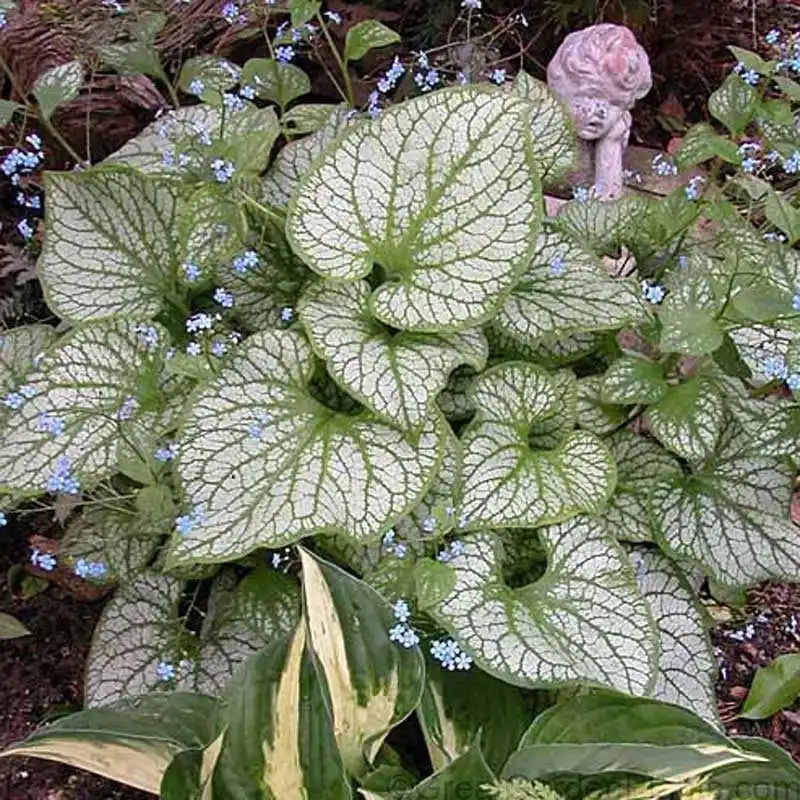
Brunnera, with its heart-shaped leaves and delicate blue flowers, offers charm and resilience to shaded areas. Often mistaken for forget-me-nots, brunnera’s blooms appear in early spring, creating a carpet of color.
This perennial thrives in moist, well-drained soil, making it ideal for woodland gardens or as a ground cover. Its attractive foliage remains lush throughout the growing season, adding texture and interest. Brunnera’s ability to withstand challenging conditions makes it a reliable choice for gardeners seeking beauty and durability.
Ajuga (Bugleweed)
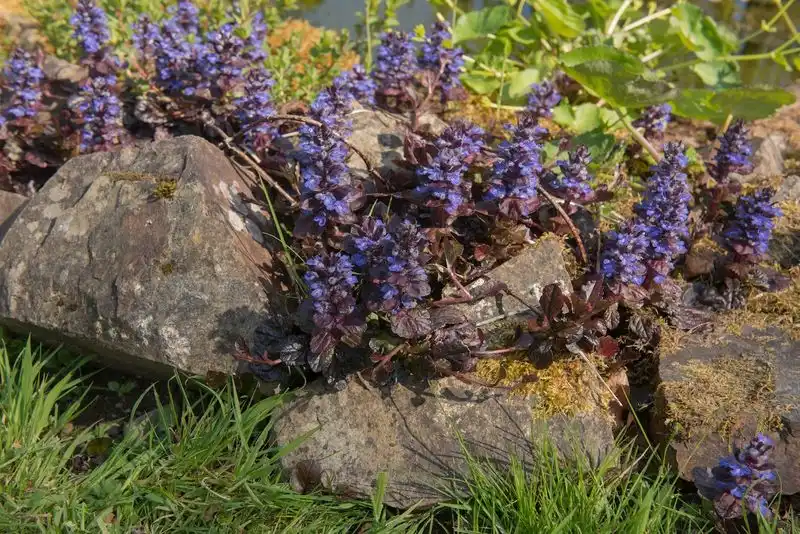
Ajuga, commonly known as Bugleweed, is a low-growing ground cover that adds a burst of color with its vibrant purple flowers. Its glossy leaves range in color, providing year-round interest.
Ajuga thrives in partial sun to full shade, making it a versatile choice for various garden settings. It spreads quickly, covering bare spots and preventing erosion. Ajuga’s compact growth habit and striking appearance make it a favorite for borders or as a ground cover. Its resilience and adaptability ensure it remains a staple in many gardens.

